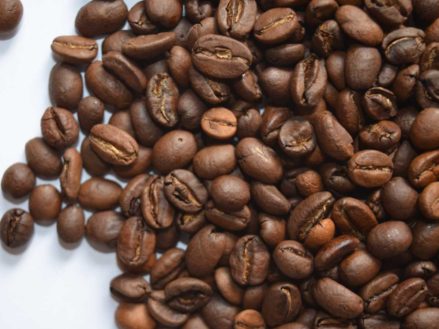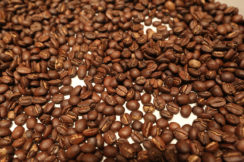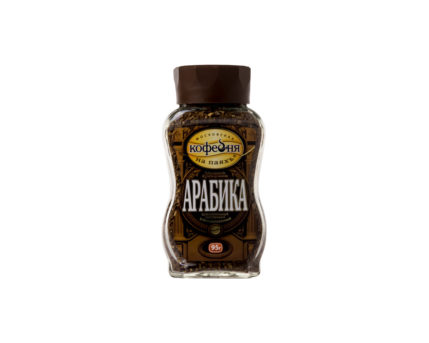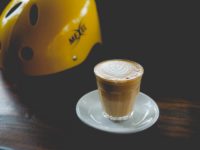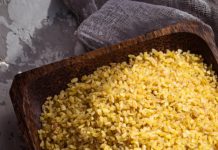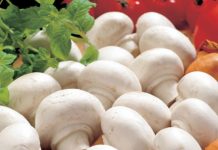Arabica coffee is the most popular and popular type of coffee beans. It is it that is grown on 70% of the plantations and it is we who we all strive to buy in a store or in a coffee shop. However, in order to choose a truly delicious, rich coffee and prepare it correctly, you need to arm yourself with knowledge.
Material Content:
Arabica coffee: varieties and selection criteria
The homeland of Arabica is Africa, or rather Ethiopia. It was here that coffee beans of this variety originally grew and here shepherds, warriors and monks discovered the property of coffee beans to give strength and vigor.
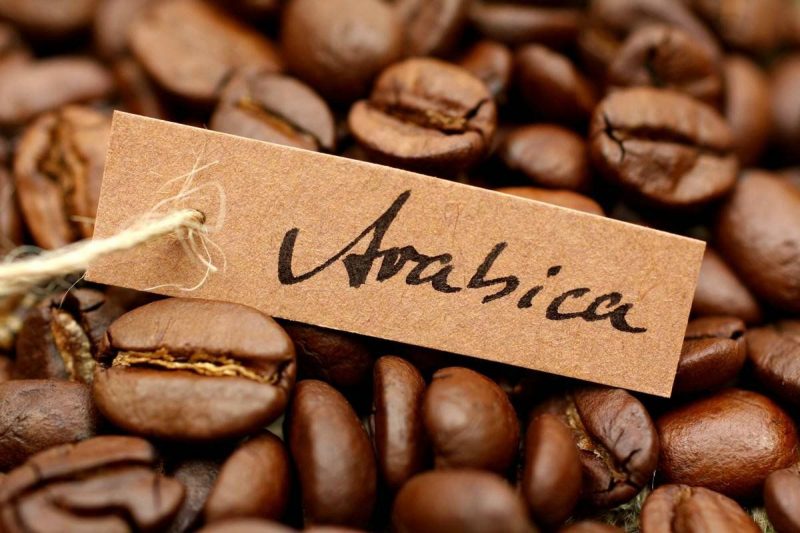
Arriving on the black continent, Arab merchants became interested in grains and berries of coffee grown here and decided to bring their compatriots to it. So coffee from Africa on merchant ships got to Yemen, and from here spread throughout the Arab world and beyond. Due to the fact that the Arabs successfully grew their own coffee and did their best to protect the uniqueness of its distribution only in their own countries, it got its name "Arabica" in honor of Arabia. Later, scientists found that Ethiopia is the birthplace of this variety. But it was too late - this coffee spread in the world under the name Arabica.
Today, arabica is considered the most expensive type of coffee due to its rich aroma, rich in essential oils and vibrant hues of taste. And accordingly, this species is much more expensive than a slightly less common robusta.
Arabica coffee beans
Arabica grows wherever coffee is cultivated in principle throughout the so-called coffee belt of the Earth. Most plantations are man-made plantings. Thousands of trees grow on these coffee plantations, on which buds, bloom flowers and ripen fruit can simultaneously swell. Coffee blooms in just a couple of days, and after that a berry forms in place of the flower. Ripening, it turns from green to bright red, glossy. The flesh of coffee berries is juicy and sweet, and in the middle there is a stone, which consists of two oval halves. When the berries are picked and peeled, the remaining bones are fried, thereby obtaining coffee beans that are familiar to everyone.
Arabica is 70% of all coffee grown in the world. Therefore, choosing coffee arabica beans in a store or in a coffee shop inquisitively name the variety. Depending on the region of growth, you can get a drink with more or less pronounced sourness or a variety of fruity notes. There are elite varieties of Arabica, tasty and vibrant in themselves, but there are cheap, less expressive ones. They are often used not mono, but in a blend or mixture with other varieties of arabica. Therefore, if a packet of coffee proudly says “100% Arabica”, this does not guarantee you the rich taste and aroma of the drink.
In addition to the variety, pay attention to the degree of roasting of grains. Light or medium roasting is less bitter, but they have more sourness. And dark roasting gives more bitterness due to the burnt sugar in the grain, which practically neutralizes the acid.
Real coffee gourmets prefer to buy only coffee beans, because a truly aromatic drink is obtained only from freshly ground beans. For the same reason, it is better to grind grains in small portions, at once. Of course, this lengthens the preparation time of the drink, but true coffee lovers see this as a special ritual.
Ground coffee
An easier way to enjoy a cup of flavored arabica at home is to buy pre-ground coffee. This is the same natural coffee bean, only specially ground in the factory. Store it in a tightly closed bag and it is better in the refrigerator so that aromatic oils do not disappear and the drink is saturated.
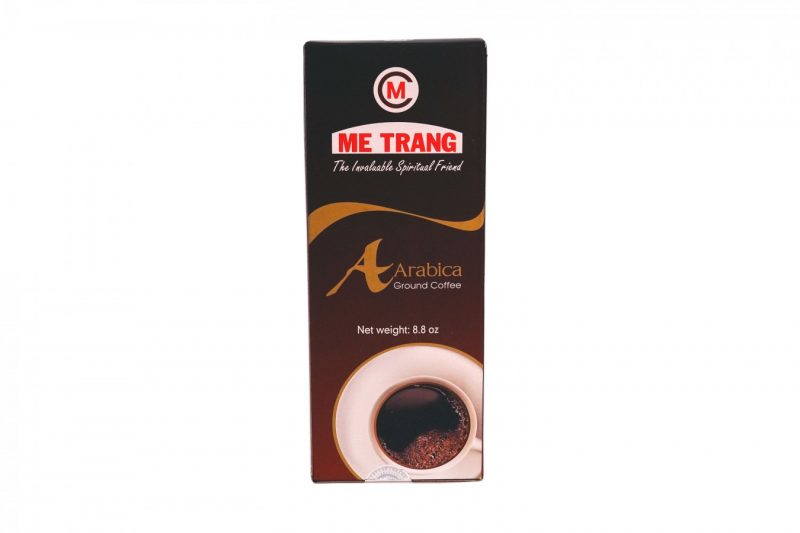
If you do not know what to choose ground coffee, first of all, pay attention to grinding.
For different methods of brewing and grinding should be different, for example:
- coarse grinding - for a French press and a drip coffee maker, large particles are better brewed in them with hot water;
- medium grinding - for a coffee machine, such particles are well pressed and quickly give the desired degree of extraction;
- fine grinding - ideal for cezves or Turks, as small particles settle to the bottom faster;
- ultrafine grinding - suitable for brewing in a mug.
In addition, the uniformity of grinding is also important, that is, all grains should be of the same size. To achieve this with a conventional electric coffee grinder is difficult, it often misses larger particles of grains. Therefore, ground coffee is the golden mean for those who want to drink natural coffee without spending a lot of time preparing it.
Soluble
True coffee lovers believe that instant coffee and not coffee at all, but a product of the chemical industry, only vaguely reminiscent of the taste of a true drink. On the one hand, this is true for low-cost mass brands. Although they use Arabica grains for production. True, they take the worst parts, the remnants of grinding and cheap grades.
However, there are more expensive brands of instant coffee, in which there is more quality arabica and the properties of such coffee are close to grain.
At the factory, first a strong drink is made from natural grains, then it is injected into the dryer, its drops dry, forming a powder, which can then be diluted with hot water. This powder can be combined into granules with steam, then instant coffee will be granulated - this is the most familiar type of this drink sold in stores.
Since most of the taste and aroma is lost during this production process, various flavors are added to the powder.And if chemical flavors are put in cheap coffee, then more expensive brands add natural coffee oils to their coffee.
Freeze dried coffee
This species is somewhat similar to soluble, but the technology of its production is slightly different - the coffee concentrate is first frozen, and then dehydrated using a vacuum. Due to the fact that coffee does not evaporate, it does not lose its aromatic oils, enzymes and all useful substances. That is why this kind is much more appreciated than granular, but it is worth considering that it is more expensive.
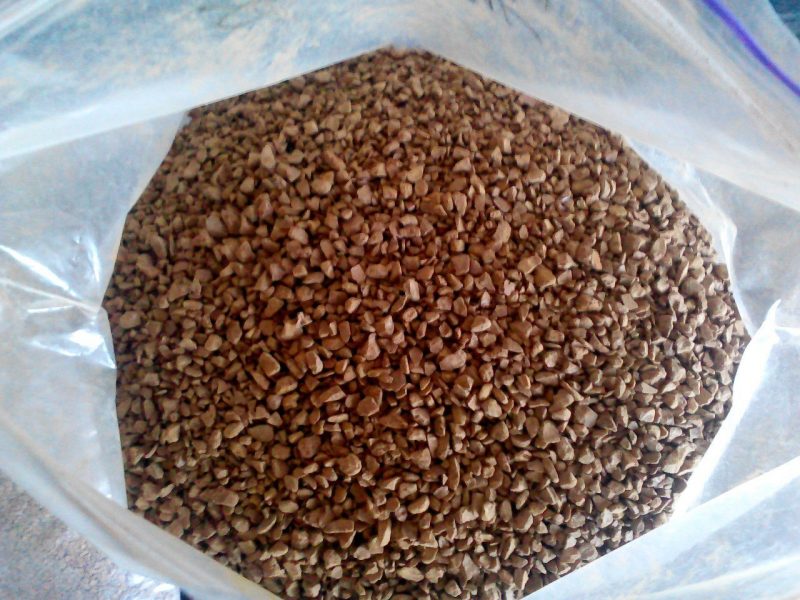
Unlike granular, sublimated often contains more arabica. In cheaper varieties of instant coffee, Robusta is always predominantly present, and not its best varieties.
Arabica coffee: recipes
To properly prepare a cup of aromatic coffee from arabica beans, you need very little effort. The main thing in the preparation of the drink is not to spoil it, but to help open up. Therefore, it is worth knowing the basic secrets that are in every brewing method.
How to brew a drink in a Turk
Making coffee in a Turk (or cezve) is incredibly simple on the one hand, and very difficult on the other hand, because you only need a cup of water for brewing, a spoon of coffee and dexterity, as well as a special flair when it is time to remove coffee from the fire.
Firstly, take the correct Turk - with a narrow neck and made of copper, it has better thermal conductivity, which is ideal for making arabica. Secondly, do not forget to rinse the Turk with boiling water to warm it, and then pour 2 teaspoons of coffee per 100 ml. water. If you prefer sweet coffee, you can immediately pour sugar. Next, pour water into the Turk so that it reaches the narrowest point. Try to pour the water carefully so that the coffee grains do not rise up.
Put the Turk on the stove and carefully monitor the coffee. When the froth begins to rise from above, turn down the heat and turn it off just when the coffee is about to boil. It is important not to let it boil and remove right before this moment. This will require some skill, but it is worth practicing, and you will feel the right moment in terms of sound and type of coffee.
Let the coffee stand for a few seconds so that it settles to the bottom and pour it into the cup.
Espresso at home
Espresso is a method of making coffee in which hot water quickly passes through the pressed ground coffee under strong pressure. Due to this, a lot of essential oils are released, but less caffeine, so the drink turns out to be bright in taste, invigorating and aromatic.
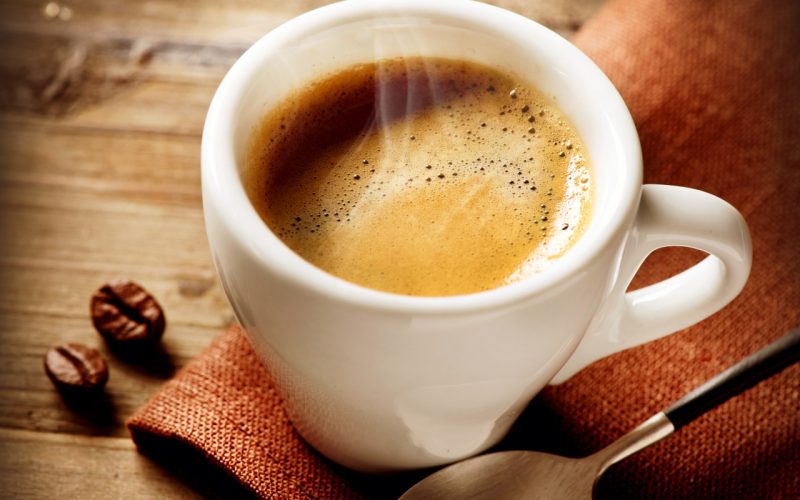
It is impossible to make a real espresso without a carob, but you can try to imitate it in a Turk. To do this, first heat the powder in a dry Turk - pour 2 teaspoons into a cezve and place on the stove for 10 seconds. Then pour in water and brew coffee until the foam rises. The fire must be strong enough to make brewing faster. When the foam rises, raise the Turk above the stove and let the foam settle, then return to the fire again and wait for the cap to re-form. After this, pour coffee immediately into a cup and enjoy its taste and aroma.
Cooking Cappuccino
If you have a coffee machine, then preparing a gentle soft cappuccino with creamy foam will not be difficult - the machine will do everything for you - and grind the grains, make coffee, and add foam cream. However, you can make a cappuccino without a coffee machine.
First, brew a standard espresso in a turk. For 100 ml of finished coffee you will need the same amount of milk, and preferably cream. Preheat the cream, for example, in the microwave, pour them into a tall glass for whipping and using a mixer or whisk, begin to whip into the foam. You do not need whipped cream, you only need airy foam.
Pour coffee first into a tall cup, add and stir sugar. Then gently pour the cream and put the creamy foam on top with a spoon.With a certain skill, this foam can be used to make beautiful patterns on the surface of the coffee, gradually pouring it through the narrow spout of the jug.
Using a French press
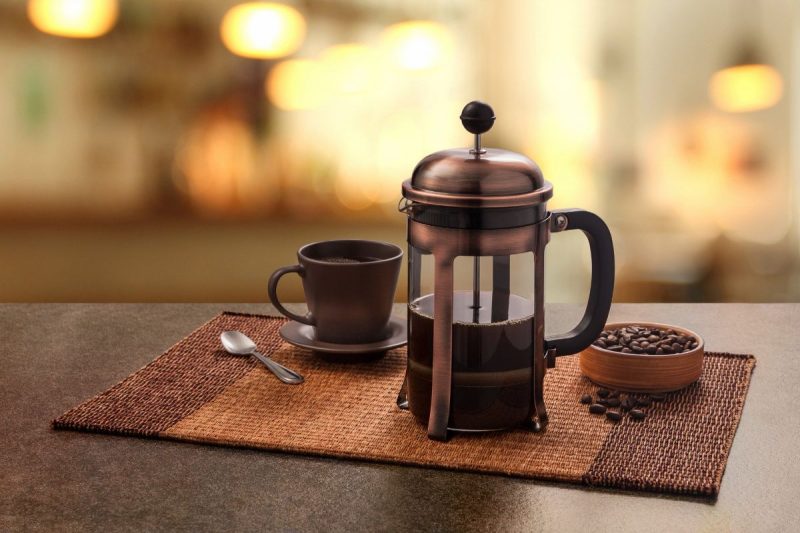
A French press is a special vessel for brewing tea and coffee, the principle of which is based on the operation of a piston in a glass flask. Take three teaspoons of coarsely ground coffee. Such a grinding is necessary so that the piston descends more easily, freeing the drink from the sediment. Pour coffee into a clean, dry flask. Previously, the flask can be rinsed with boiling water and wiped dry.
Pour 100 ml of water into the flask and close the French press with a lid. Wait a minute and carefully pour another 150 ml of water, being careful not to damage the resulting foam. Close the lid again and wait 3 minutes. Lower the piston down and pour coffee into the cup.
In addition to a cezve and a French press, you can make coffee in a cup by simply pouring finely ground coffee and pouring boiling water over it. But a true coffee machine will certainly come in handy with a coffee machine or a drip coffee machine that will fully reveal the taste of Arabica and allow you to prepare a variety of drinks based on it.


